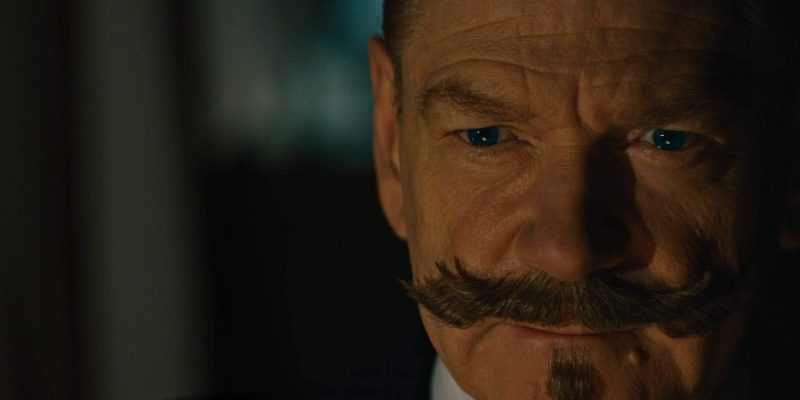A Haunting in Venice hit cinemas around the world; with it, we have the third entry in the celebrated Belgian detective’s adventures adapted by Kenneth Branagh. In his Hercule Poirot trilogy, Branagh has somehow happened upon a way to get people who adore the procedural nature of shows like CSI, NCIS, Law & Order, etc., to follow him down his grand, operatic retelling of Agatha Christie’s work. After all, how many people sit down and lose hours, even days, watching the same old procedural stories retold in multiple variations?
I still remember when Robin Williams popped up on Law & Order: Special Victims Unit. Not only that, there was the infamous episode of CSI where guest star Justin Bieber got shot down in a hail of bullets. These are television series that bring almost endless replay value to those at home.
So how did Branagh tap into this on a cinematic scale? Well, I believe it began with Murder on the Orient Express. He realised to get asses on seats, he had to hedge his bets and hit every demographic. He gave every generation someone to root for in this film. For those looking for the British royalty of cinema, there was Dame Judi Dench and Derek Jacobi. If you were into big names in the ’80s and ’90s, there was Willem Dafoe, Michelle Pfeiffer, and Johnny Depp. Then to cover the kids, there was Josh Gad, Daisy Ridley and Lucy Boynton.
I myself had never seen or read Murder on the Orient Express, so I was blown away by the award-winning talent on hand. Add to this a stylistic and bombastic energy and Murder on the Orient Express was the perfect introduction to a modern Hercule Poirot (played by Branagh himself) with an equally over-the-top moustache. Even watching the trailer, it’s far more stylistic than it has any right to be. With neon writing to indicate our suspects, Imagine Dragons playing in the background gives Poirot a rather dashing introduction complete with, “And who are you?”
Branagh understood that to bring in a character to a new audience, he’d have to make some cinematic choices. Making him far more action-oriented in this latest iteration. This has added an extra layer to the famous detective, an unwanted one in some circles, which gives new audience members more engagement I believe.
Related: A Haunting in Venice is a Study of Post-Pandemic Trauma
With Murder on the Orient Express, Branagh introduced his Poirot and set the stage. In A Death on the Nile, he began to experiment and decided to go for names of the moment rather than established actors. He had Gal Gadot and Armie Hammer leading a decent cast, which was a mixture of comedians and established television stars. He even began to build a new background for Poirot with new connections to characters within Agatha Christie’s novels. He gave Poirot’s moustache an origin story and his young foppish friend Bouc (a returning Tom Bateman) a meatier role. This paid off emotionally for me. Unfortunately, this film would be marred with several issues, not least of all several controversies and a global pandemic which changed the look of the film, for the worse. Thankfully, Branagh capitalised on this with the bottle episode-style nature of Poirot’s adventures.
These two films and Branagh’s stylistic choices would culminate in A Haunting in Venice. At this point, he’s produced two films that have brought in an audience. He’s proven himself and now, he can really let himself loose. With A Haunting in Venice, he’s gone full Branagh. Dutch tilts, which Branagh absolutely adores, complement the moody ambience Branagh is going for.
This time around, he’s done with bombastic style, he’s giving a far more sombre affair and to help with that he brings in actors he’s worked with before as well as several unknowns. This is exemplified by Jude Hill and Jamie Dornan, two actors who worked with Branagh on his film Belfast. He even has them as father and son once more. He knows what he can get out of them and utilises them to full effect.
Also, with lesser-known actors rounding out the cast of this more intimate story, it allows audiences to fall further down this rabbit hole. He also further shakes up the canon of Poirot, allowing newcomers and veterans to come into this world and love it. This continues to allow him to keep as many people interested in his particular iteration of Poirot. It’s masterfully done.
With this trio of adaptations, Branagh has proven that he can bring audiences to see the procedural story on a big blockbuster screen. Now with news from the Christie Estate, that they’d love him to do more Poirot stories, all we must do now is wait for the preeminent Belgian detective to return.
